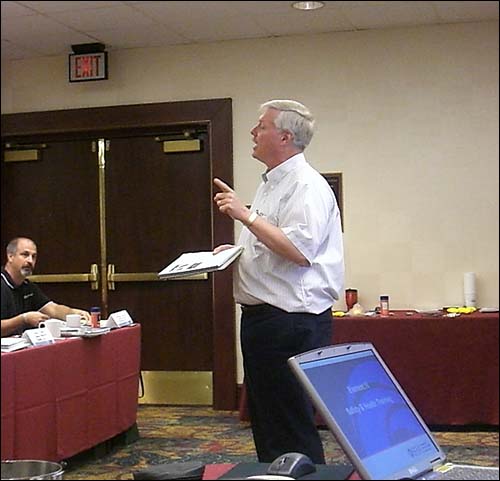Listening to Questions
Listening makes students feel more appreciated and respected.

Active listening also fosters the good listening skills in your students by serving as a model for positive and effective communication.
One way to understand active listening is related to the Golden Rule. Listen to others as you would want them to listen to you. With that in mind, here's what works for good listeners.
10 Tips to Effective Listening Skills
- Face the speaker: Sit up straight or lean forward slightly while standing to show your attentiveness through body language.
- Maintain eye contact: Make direct eye contact to the degree that you all remain comfortable.
- Minimize external distractions: Turn off the TV. Put down your book or magazine, and ask the speaker and other listeners to do the same.
- Respond appropriately to show that you understand: Use non-verbal cues like nodding your head in agreement, raising your eyebrows, etc. Use verbal cues like ("uh-huh" and "um-hmm"). Say words such as "Really" or "Interesting." Repeat the question in your own words to show you understand.
- Focus solely on what the speaker is saying: Try not to think about what you are going to say next. The conversation will follow a logical flow after the speaker makes her point.
- Minimize internal distractions: Research shows that, on average, we can hear four times faster than we can talk. So it's easy to formulate our answer to what we "think" the question is going to be before we actually hear it. Don't interrupt while the student is asking the question (this is one of my biggest challenges). This is a sign that you're actually thinking about the answer before the student finishes the question.
- Keep an open mind: It's not what is "right" or "wrong" that is important... it's "what works" vs. "what doesn't work" that matters. Don't judge the question or the student. Wait until the speaker is finished before deciding whether to agree or not. Don't make assumptions about the student's motives.
- Move toward the student: Initially move toward the student a little while the question is being asked. This signals a desire to hear and understand the student. It also sends the message that you are focusing on the question.
- Don't get defensive: We usually get "defensive" in tone and word when we think someone else has been "offensive." Wait until the student finishes to defend yourself if you feel the need to do so. Try not to take any negative question or remark personally.
- Engage yourself: Ask the student questions to clarify in your own mind what is being asked. Repeat the question so the rest of the audience can hear it. Rephrase the question if you are not clear what is being asked. "Let me see if I understand your question..."
Knowledge Check Choose the best answer for the question.
4-2. Which of the following serves as a model for positive and effective communication during a training session?
You forgot to answer the question!
